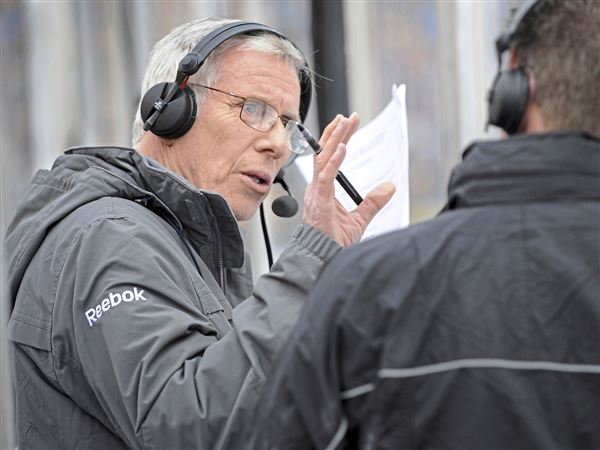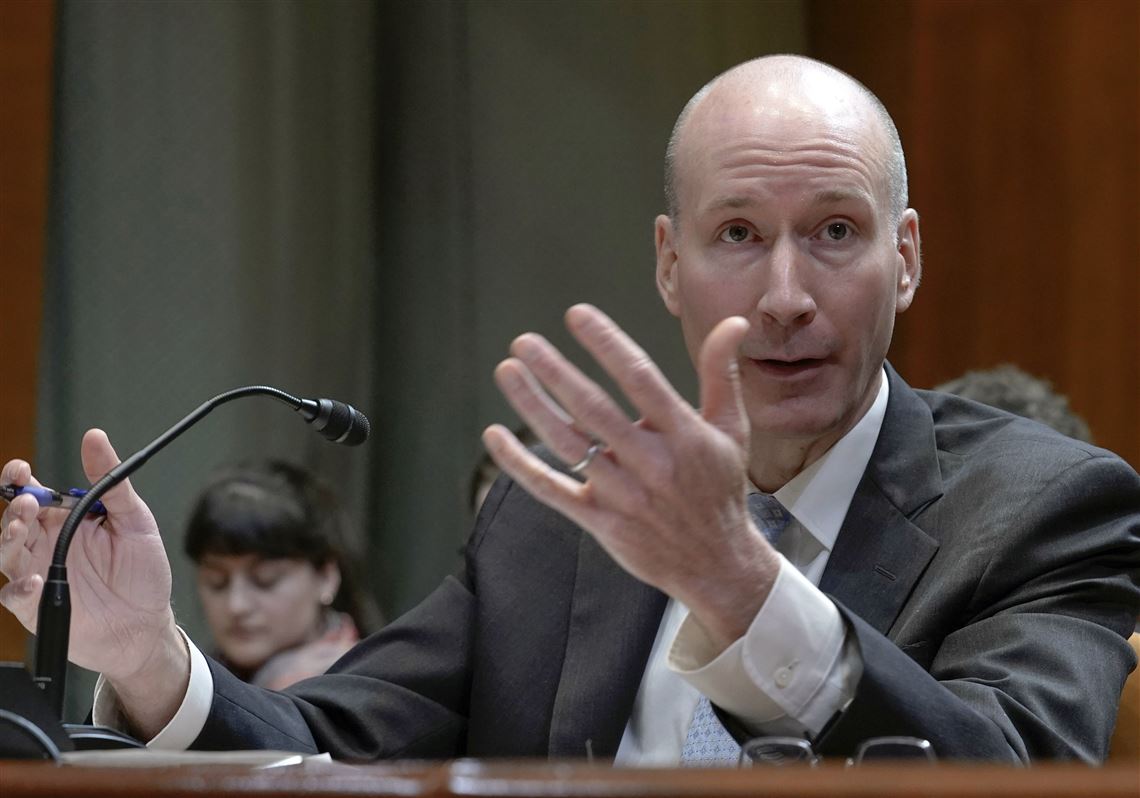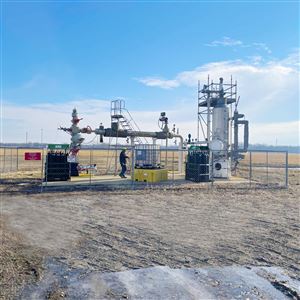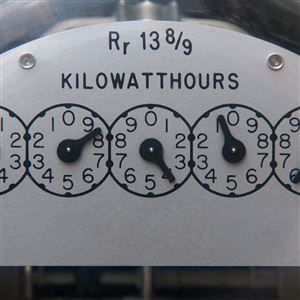Point: U.S. natural gas exports should flow unbridled throughout the world, bringing energy security, prosperity and cleaner air to U.S. allies and developing countries.
Counterpoint: With the U.S. now the world’s top exporter of oil and gas, it’s time to reevaluate how sharing this bounty of fossil fuels impacts American consumers and the world’s climate goals.
If either of these arguments speaks to you, the other side would implore you to zoom out and see the big picture of the place of natural gas in the world.
This is the call that each side has deployed against the other in the weeks since the Biden administration announced it would pause approvals of new natural gas export terminals.
The pause — which does not impact the eight liquefied natural gas terminals operating today, the seven under construction or the 10 that have been approved — is meant to give the U.S. Department of Energy time to review what it means for this infrastructure to be considered “in the public interest.” The review is expected to last through at least November.
David Turk, DOE deputy secretary, testified before Congress earlier this month that the dynamics of natural gas exports have changed significantly since 2018, when the agency finalized its most recent macroeconomic analysis. That was “just two years after the first export of U.S. LNG,” Mr. Turk noted.
Since then, the U.S. has become the top supplier of liquified natural gas to the world. It now exports about 11% of all gas produced in this country.
Mr. Turk grouped the administration’s concerns into three categories.
The first is the price of gas.
“We need to answer how authorizing exports beyond these unprecedented volumes could impact affordability for U.S. consumers and competitiveness of U.S. manufacturing,” Mr. Turk said.
The agency also needs to better understand the near and long term climate and environmental consequences of LNG exports, he said, and how projections of future fossil fuel demand have changed with the growth of renewables.
The Department of Energy approves natural gas exports, while the Federal Energy Regulatory Commission approves permits to build terminals where natural gas is cooled into a liquid and loaded on tankers for shipment.
On Thursday, the U.S. House of Representatives passed a bill that would strip the Department of Energy of any role in the LNG approval process. It is not expected to pass the Senate.
On prices
The concern that increased LNG exports will raise gas prices in the U.S. has been advanced by consumer advocate groups and large domestic consumers such as the Industrial Energy Consumers of America, a D.C.-based trade group that represents U.S. manufacturers.
With more gas headed abroad, there would be less left in storage in the U.S., they reason, which could cause prices to spike during peak winter and summer demand periods.
“The relationship is fundamental to the law of supply and demand,” the organization wrote in a letter to the Senate Committee on Energy and Natural Resources this month. “Low inventories result in high prices and high inventories result in low prices.”
The letter featured a chart overlaying the gas prices on top of storage levels, showing how they move in opposite directions.
Natural gas producers use a different metric — one they’re not happy about at the moment — to argue the opposite.
Today, the price of natural gas future contracts is about $1.62 per million British thermal units. This is lower than what gas was trading at before LNG exports began in 2016. Except for 2022, where energy prices and flows across the globe got scrambled by Russia’s invasion of Ukraine, the price of natural gas in the U.S. has been relatively low since shale gas came on the scene in the late 2000s.
The price is so low today that drillers, including the nation’s largest gas producer, Pittsburgh-based EQT Corp., are talking about curtailing some production.
They know that selling LNG to Europe or Asia fetches several times the value of natural gas in the U.S. and would readily ship more if infrastructure allowed. But it’s not just about LNG terminals. It’s also about pipelines.
Gas in Appalachian markets trades at a discount to gas on the Gulf Coast, for example — and has for over a decade — because there’s more gas produced here than can be taken away or absorbed by regional demand.
“Until we return to a world where we can build necessary domestic infrastructure, we believe we are more likely to see prices around the $2 level they are today,” Jeremy Knopp, EQT’s CFO said during the company’s call with analysts last week. “Pricing becomes the only variable left to balance natural gas inventories.”
On climate
EQT’s CEO Toby Rice, who testified before the House Energy and Commerce Committee on Feb. 6, uses the example of how the U.S. has reduced its greenhouse gas emissions over the past two decades by substituting gas-fired power plants for coal-fired plants to advocate for the same replacement abroad.
Asked about his efforts in Washington on EQT’s fourth quarter earnings call last week, Mr. Rice said: “It seems like we are in violent agreement here on what we want from our energy system in the future.”
“Republican and Democrat, everybody wants more affordable energy. Everybody wants more reliable energy. Everybody wants cleaner energy,” he said. “The hump that we need to get people over is to understand that natural gas is a cleaner form of energy.”
The Clean Air Task Force, an advocacy nonprofit that got its start working to reduce pollution from coal power plants, released an analysis last week that put Mr. Rice’s main climate talking point to the test. It didn’t question the likelihood that more U.S. gas exports would induce coal to gas switching abroad — it just assumed that scenario for the sale of calculating the greenhouse gas impact.
The organization’s study compared total greenhouse gas emissions from the lifecycle of U.S. gas shipped to a country in Asia, Vietnam, and burned for power to that of the emissions from a shipment of Australian coal to make electricity.
It found that the gas burn would be associated with 24% fewer emissions than coal, when accounting for all the methane leaks and fuel use associated with gas production, transportation and processing.
This figure would vary depending on where the gas comes from — northeast Appalachian shale gas, for example, has been shown to have the lowest leak rates in the U.S. Permian gas, in Texas, has among the highest. The 24% emissions benefit is inclusive of this variation.
Still, “this reduction is simply insufficient given the imperative goal of decarbonization,” the authors wrote. Other studies have found have found the emissions benefit to be slimmer and some have even found it detrimental.
The Clean Air Task Force authors also cautioned that gas competes not just with coal but with other energy sources.
“Any benefit that gas produces relative to coal must be discounted by the fact that gas is also competing with zero-carbon electricity,” the Clean Air Task Force study warned.
A recent LNG report from consulting firm Wood Mackenzie noted that climate policies are running into energy supply and price considerations across the world.
“In Europe, which has been at the forefront of low carbon policies, affordability is becoming increasingly important as growing public awareness of the costs of low-carbon technologies (e.g., heat pumps) has entered the political debate,” the report said.
Germany and Italy have cut subsidies for energy efficiency and low carbon technologies, the report said, and other nations that planned to ban gas boilers have revised their targets.
Wood Mackenzie said that a “softening on some of the targets” would give gas a longer runway in Europe.
On demand for gas
Wood Mackenzie sees the same two considerations driving energy decisions in Asia — affordability and supply security.
“But, unlike for Europe, this might be detrimental for the perspective of gas demand growth,” the report said. “This is because many emerging markets in Asia continue to rely on coal, which is cheaper than gas and often available domestically.”
In fact, the demand for energy is projected to grow so dramatically in Asia over the next few decades that some analysts believe there won’t be a choice at all — the continent will be building coal plants along with gas plants to meet its needs.
Last month, the International Energy Administration released its 2024 outlook predicting gas demand would increase by 2.5% this year worldwide.
What’s driving this trend is not energy-strapped Europe, which has decreased its gas needs over the past year. It’s a combination of growth in Asia and the low price of natural gas.
Over the long term, the Dutch conglomerate Shell expects LNG demand to grow by more than 50% by 2040, even as some countries have already passed their peak gas demand and others are on track to reach it over the next two decades.
China’s gas demand growth in particular is robust, but Shell’s analysis envisions the majority of it being served by Russia, through pipelines and Russian LNG exports.
Worldwide, Shell anticipates that demand for LNG will outstrip supply by the mid-2030s.
The U.S. Energy Information Agency, mapping scenarios that range from low to high economic growth, expects global gas demand to rise between 11% and 57% by 2050.
By the end of the decade — with all the LNG terminals already built or approved and despite the DOE approval pause — U.S. gas exports will feed 5% of all gas demand across the world, Shell said.
The question that Mr. Rice posed during the call with analysts last week is: “Is that enough?”
Anya Litvak: alitvak@post-gazette.com
First Published: February 18, 2024, 10:30 a.m.
Updated: February 19, 2024, 8:24 p.m.



















